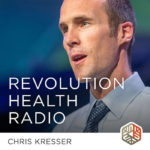
Understanding Fertility Awareness Methods of Birth Control

Approximately 65 percent of women in the United States of childbearing age are using some type of contraception, and over 99 percent of all women will use a form of contraception at some point in their lives. (1, 2)
Birth control is a deeply personal and controversial subject. Contraceptives are considered one of the biggest achievements in women’s rights and modern history, but women often aren’t satisfied with their method of birth control. Between 50 and 75 percent of women switch or stop using oral contraceptives due to side effects. Almost a third of women have used five or more types of artificial birth control. (3)
I’m in several online mom groups, and every other day, it seems that a woman asks which contraceptive she should try next, because her current one causes side effects like:
- Constant bleeding
- Spotting on and off
- Headaches
- Mood swings
- Low sex drive
And this list doesn’t even touch on the more serious side effects linked to birth control.
What are fertility awareness-based methods (FABMs) of birth control? Find out, and learn how to use FABMs to track your fertility. #healthylifestyle #wellness
Health Risks of Artificial Birth Control
Let’s do a quick review of the hormones involved in a woman’s cycle. At the beginning of her cycle during menses, low levels of luteinizing hormone (LH) and estrogen signal the pituitary gland to produce follicle-stimulating hormone (FSH). FSH begins to mature 15 to 20 follicles containing eggs, and estrogen rises. Higher estrogen halts FSH production and signals the pituitary gland to release LH, causing a single egg to be released from a follicle. Once the egg is released at ovulation, it’s viable for 12 to 24 hours. The ruptured follicle secretes progesterone and estrogen to continue to prepare the uterus for pregnancy. If the egg isn’t fertilized at ovulation, estrogen and progesterone drop, eventually resulting in the return of menses.
Hormonal contraceptives come in many varieties—pill, patch, ring, intrauterine device (IUD), or shot—and they disrupt a woman’s natural cycles. Combined contraceptives contain both synthetic estrogen and synthetic progesterone, while others like the mini pill contain just synthetic progesterone. They all aim to keep hormone levels constant, which suppresses ovulation and creates a hostile environment for sperm to survive. But hormonal contraceptives have been linked to a wide range of health problems, including but not limited to:
- Blood clots (4, 5, 6)
- Depression (7, 8, 9, 10)
- Osteoporosis (mostly linked to Depo-Provera shot) (11)
- Change in the gut, vaginal, and oral flora (12, 13, 14, 15, 16)
- Autoimmune disease, including multiple sclerosis and lupus (17, 18)
- Nutrient depletion, including folic acid, magnesium, selenium, zinc, and vitamins B2, B6, B12, C, and E (19, 20, 21, 22)
- Gallstones and gallbladder disease (23, 24)
- Breast cancer (mainly for the combined options) and skin cancer (25)
IUDs, both hormonal and copper, have also been shown in rare cases to translocate and even perforate the uterus. (26, 27) In the case of copper IUDs, copper toxicity and chronic inflammation have been reported. (28)
If you’ve had it with side effects, artificial hormones, devices, and implants, there are other options! In fact, 40 to 60 percent of surveyed women said they would like to learn more about FABMs from their healthcare providers. (29) FABMs are evidence-based, effective methods of birth control that work with a woman’s natural cycles to identify her fertile days and infertile days based on observations like basal body temperature (BBT), cervical mucus, and/or hormone levels.
Myths of Fertility-Based Awareness Methods of Birth Control
Before I get into what’s involved in FABMs, I want to bust some common myths about them.
Myth #1: FABMs Are the Rhythm Method
Rhythm methods, or calendar methods, were used several generations ago … and they were terribly ineffective. Rhythm methods estimated a fertile window based on a woman’s typical cycle length only. They sort of worked for women who had clockwork cycles, but even someone with a clockwork cycle can have an unexpectedly short or long cycle due to early or late ovulation, and then all bets are off.
Furthermore, the rhythm method assumed that a woman’s luteal phase, the time between ovulation and the next period, was 14 days. However, normal lengths of the luteal phase can vary from 10 to 16 days among women, further discrediting calendar method calculations. Modern methods are not the rhythm method. Can we finally put the nail in the coffin on this?
Myth #2: FABMs Aren’t Effective for Preventing Pregnancy
I’m not going to lie: FABMs generally take more work than popping a pill every day. But the effective rates for avoiding pregnancy can be very high—over 98 percent in some studies. (30, 31, 32, 33) However, keep in mind that your effectiveness will be highest only if you follow all the rules of your method and, ideally, if you work with an instructor.
Myth #3: You Can’t Use an FABM if You Have Irregular Cycles
People who make this claim usually are still thinking of the rhythm method. FABMs are all about reading your body’s fertility signals either directly (by measuring urine metabolites of hormones) or indirectly (by observing symptoms like cervical mucus and BBT). When cycle length changes, chart observations change, and the fertility window then also shifts.
Myth #4: FABMs Are Expensive to Learn and Use
Prices do vary, but they aren’t all expensive. Some methods are free or nearly free, while others require ongoing instruction and/or purchasing supplies like a monitor, testing strip, or basal body thermometer.
How FABMs Work
Choices like family size and child spacing are deeply personal. I don’t claim to be an expert on natural birth control options, nor am I an instructor of any method. But I do consider myself an advocate for these methods and strive to provide women with accurate information about them and resources for learning more.
Unlike men, who are fertile every single day, a woman is technically fertile for only about six days per cycle, give or take. She is infertile at the beginning of her cycle when estrogen and LH are low. She becomes fertile as first estrogen and then LH rise in the days leading up to and including ovulation, and then she returns to being infertile once progesterone rises and LH and estrogen begin to drop.
When an egg is released during ovulation, it sticks around for only 12 to 24 hours, waiting to be fertilized by sperm. When conditions are right, sperm can live several days (in rare cases, up to a week) in fertile cervical mucus that appears leading up to ovulation. The goal of FABMs is to identify that fertile window and, if you’re trying to avoid pregnancy, abstain from sex during that time frame. (Some methods advocate for barrier methods during times of fertility, but if you go that route, you’ll be back to the effectiveness of whatever barrier method you choose to use.)
Four Fertile and Infertile Signs
FABMs require observing and/or measuring one or more of the following four signs to track fertile and non-fertile days.
1. BBT
BBT increases about one-half to one degree Fahrenheit in response to the progesterone surge that occurs after ovulation. (34) BBT needs to be recorded every morning at approximately the same time upon waking with a basal body thermometer. Typically, after three or four days following a temperature rise, ovulation is confirmed and the infertile period returns. If you’re tech-savvy, check out the Tempdrop, a wearable device that records your temperature while you sleep.
Not all methods of fertility awareness require BBT. Disrupted sleep, shift work, and waking at night can all affect the accuracy of BBT. Some women can even ovulate without a clear rise in BBT. (35)
2. Cervical Mucus
Fertile cervical mucus observed by a woman reflects rising estrogen and fertility. Fertile mucus typically has egg white-like qualities, being slippery, clear, and stretchy, and allows sperm to travel up the fallopian tubes to fertilize an egg. Being able to distinguish fertile from non-fertile mucus takes a bit of practice, but the World Health Organization reported that over 93 percent of women can easily distinguish between fertile and non-fertile mucus when they are taught what to look for. (36)
3. Cervix Position
During infertile periods, the cervix usually sits low, is firm, and is closed. A high, open, and softer cervix indicates possible fertility. Although cervix position is included in some FABMs, it’s generally used as a secondary fertility sign to others.
4. Urine Metabolites
Thanks to modern technology, women today can measure hormone levels at home. The Clearblue Fertility Monitor was developed to help couples identify their most fertile days to increase the chance of conception, but several FABMs now use the monitor and different algorithms to avoid pregnancy. The monitor measures levels of LH and estrogen in first-morning urine.
Three Ways to Use FABMs
The number of modern methods of fertility awareness might surprise you! Some methods may suit your lifestyle better than others. If you’re interested in learning an FABM, I encourage you to research the different methods below, talk with women who use them, and then even interview a few instructors before deciding on which method to pursue.
Although over 100 fertility-tracking apps are available on the market, don’t be fooled—an app is not a method! Apps can be tools used in conjunction with an FABM, but they aren’t stand-alone methods.
1. Sympto-Thermal Methods
Sympto-thermal methods track BBT, mucus, and also sometimes LH via urine test strips and cervix position. The popular book Taking Charge of Your Fertility teaches this method, as do the organizations SymptoPro and FEMM. When I began using FABMs almost 10 years ago, I first learned sympto-thermal methods through the Couple to Couple League.
2. Mucus-Only Methods
These methods only track a woman’s cervical mucus to determine days of fertility and infertility. I have been using Creighton for the past five years, and I like how objective and structured the terminology is for describing mucus characteristics. The Billings Ovulation Method also tracks mucus, but it’s more individualized and users also detect sensations experienced throughout the day. The TwoDay method is an even simpler mucus-only method.
3. Urine Metabolite Testing Methods
The Marquette Model and the Boston Cross-Check method use the Clearblue Fertility Monitor to track levels of estrogen and LH. Some of the methods also have options to include mucus and/or BBT along with the urine testing to determine fertile and infertile days.
Your Fertility Is Not a Disease
Fertility awareness provides myriad benefits. FABMs can be used to avoid or achieve a pregnancy, without the need for surgery, synthetic hormones, or copper devices. Knowing more about your body’s fertility and natural cycles is empowering. In some cases, fertility awareness can help identify hormonal imbalances and other issues like endometriosis, infertility, and polycystic ovary syndrome.
Our ancestors considered fertility a sign of good health—and we should too. FABMs treat fertility as a sign of health to be preserved instead of a “disease” to be treated.
Our hunter–gatherer ancestors left us a blueprint for healthy living. They ate nutrient-dense foods, managed their stress, got enough exercise, embraced pleasure, and practiced healthy sleep habits—and they were lean, fit, and remarkably free from chronic disease. Ancestral health is based on the idea that, by correcting the mismatch between our lifestyles and our biology, we can also live healthier lives and prevent or even reverse chronic illnesses.Health coaches trained by the ADAPT Health Coach Training Program learn the skills and competencies they need to act as change agents for their clients and succeed in the career. Our year-long, virtual course also includes an education on ancestral health and how diet and lifestyle choices impact different health conditions, as well as Functional Health—a healthcare model that emphasizes treating the root cause of an illness instead of managing symptoms. Find out if a career as an ADAPT-Certified Functional Health Coach is right for you.






